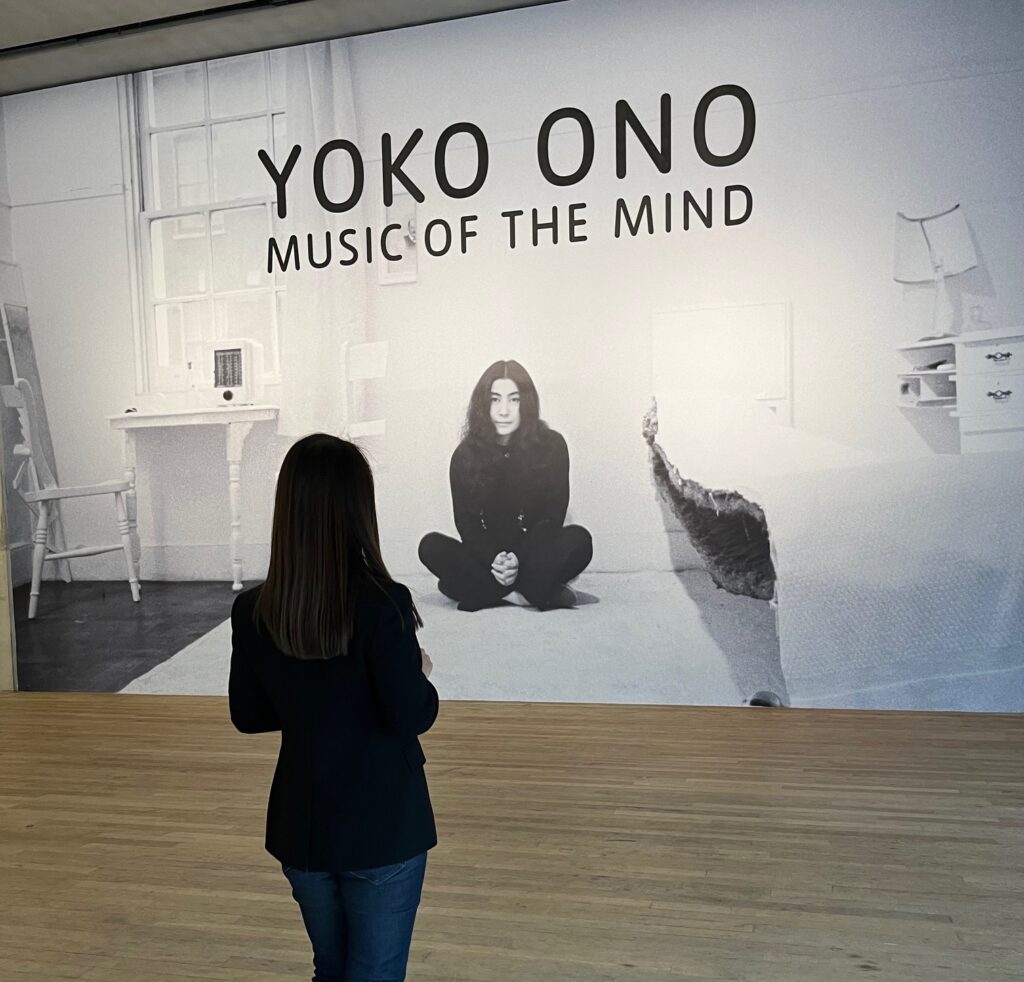
Tate Modern
6 June 2024
What I admire about Yoko Ono is her ability to infuse humor and surrealism into her art.
At the Music of the Mind exhibition, centered on viewer engagement, I was immediately captivated by Ono’s Eyeblink. This mesmerizing 2-minute-and-40-second experience of intently observing the simple act of blinking felt like time stood still. Ono’s work encourages us to pause and be present, particularly in our digital age where our attention spans are fleeting, shifting focus every 47 seconds on average.
Eyeblink prompts contemplation on the act of seeing and being seen, evoking memories of the pandemic era when we scrutinized each other’s eyes due to mask-wearing.
Ono’s playful yet profound approach to art invites us to find wonder in the mundane.
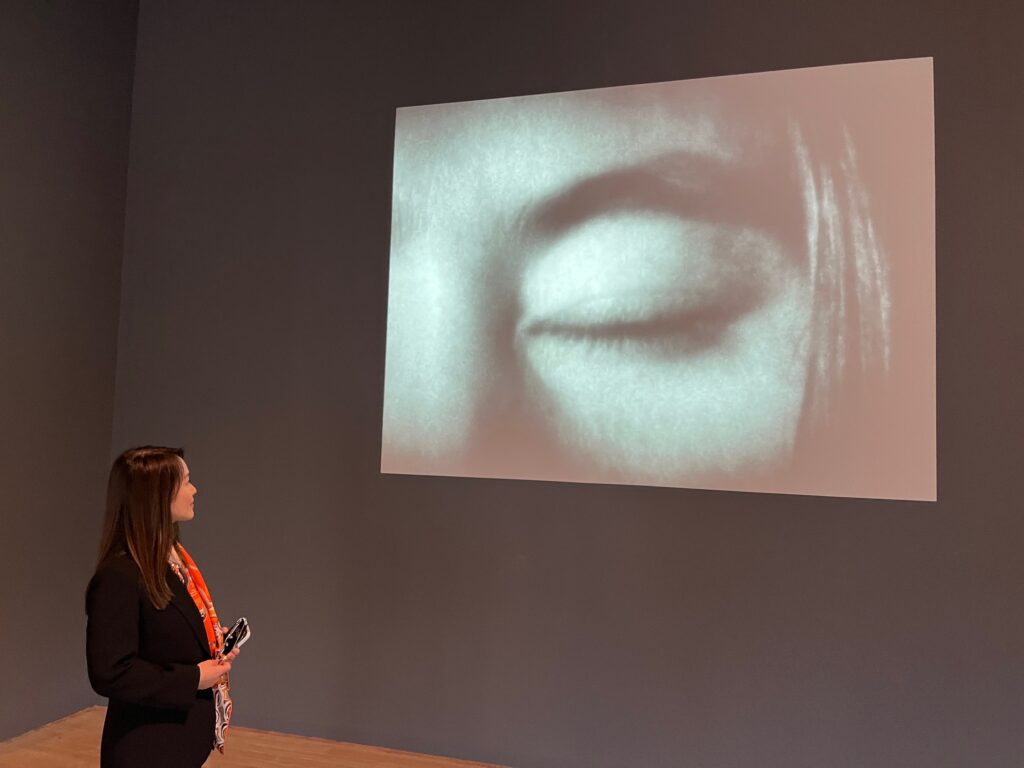
Eyeblink Fluxfilm no. 15 1966. Directed by Yoko Ono (photo private)
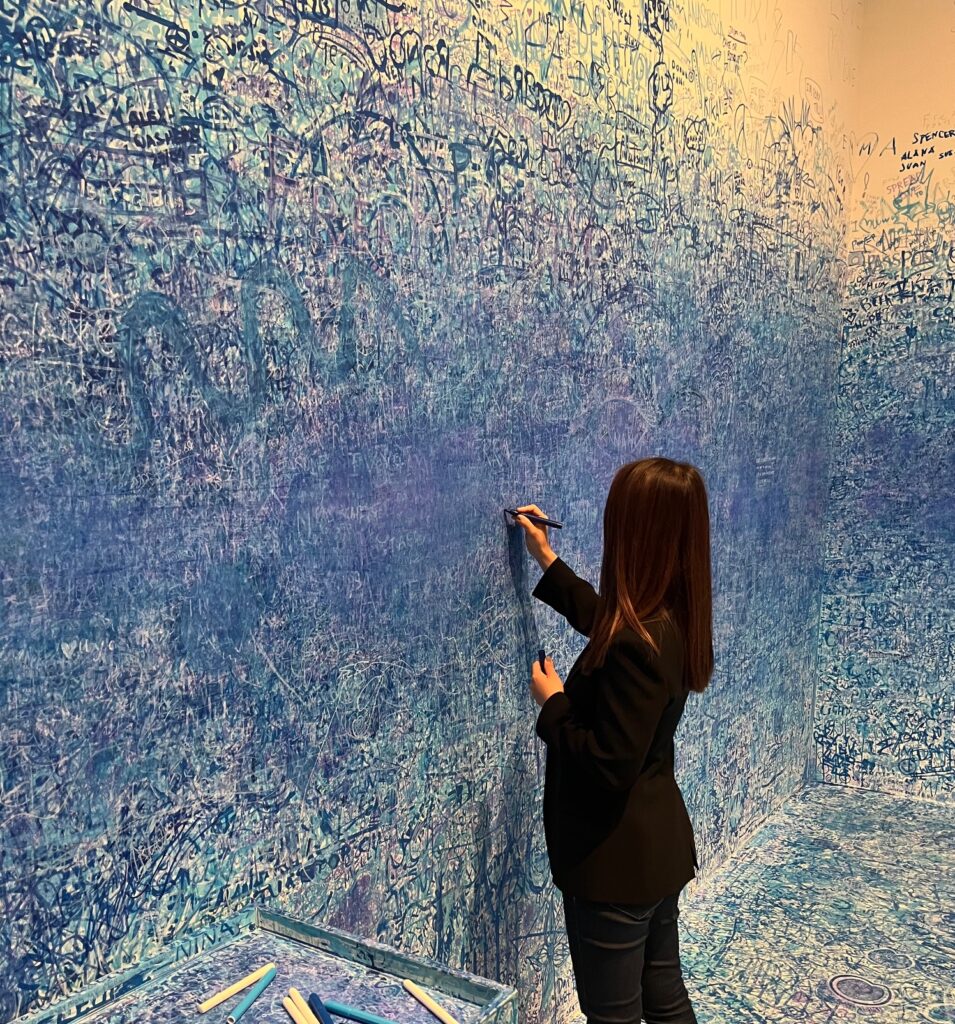
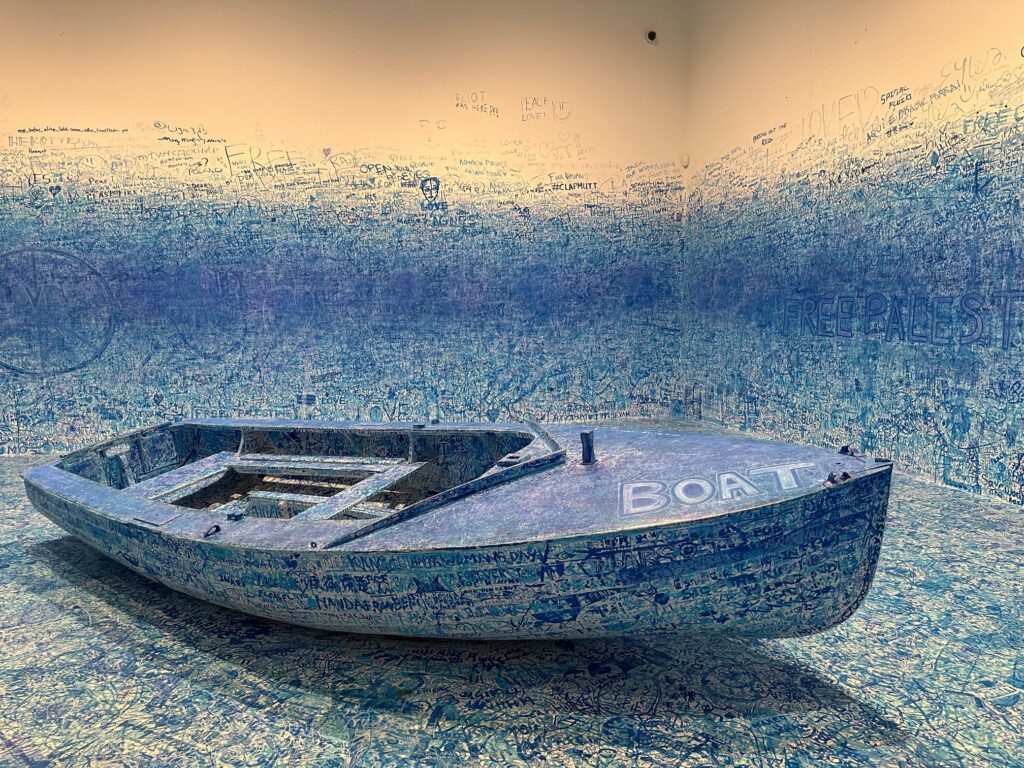
Add Color (Refugee Boat) concept 1960, first realised 2016 installed at Yoko Ono Learning Garden of Freedom (photo private)
Hammering loudly in the museum space, witnessing others’ engagement with the evolving artwork, produced a striking collective result that reminds me of Günther Uecker’s works.
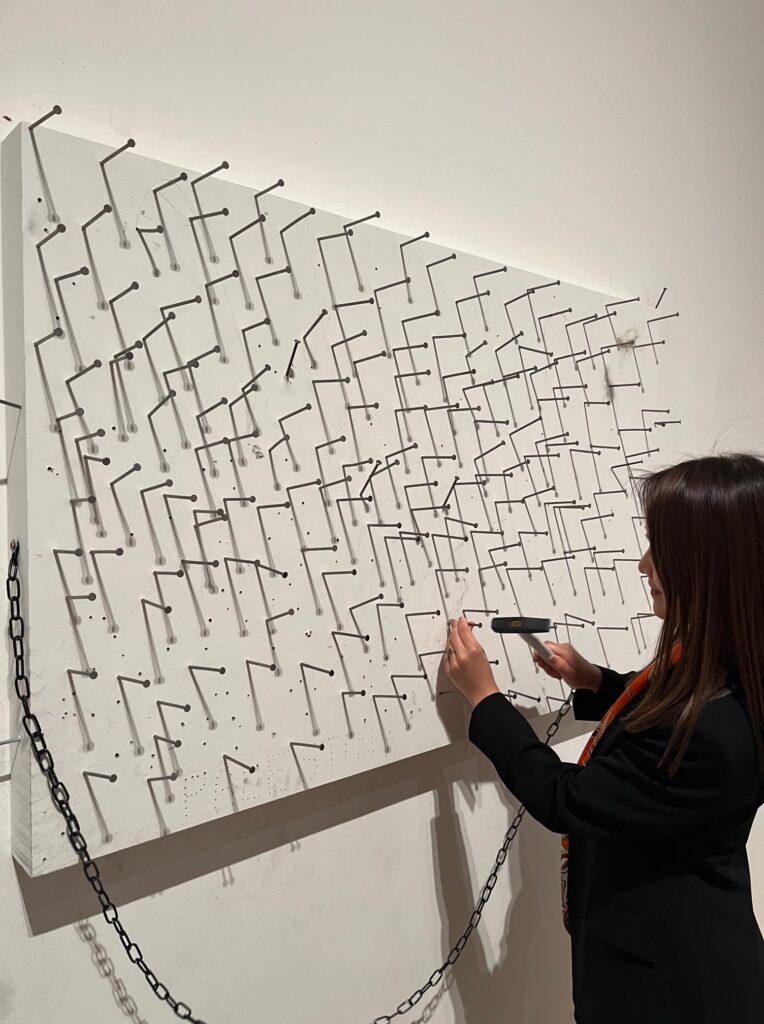
Painting to Hammer a Nail 1961 first realised 1966 (photo private)
This exhibition fostered experiences of collective artistic activity. However, Ono’s Cut Piece was particularly striking.
Devoid of traditional art-making, Ono presented her own body as the artwork. In the video performance, she embodied passive objectification – a woman literally objectified as audience members approached and cut away pieces of her clothing. The powerful presence of the artist confronted dynamics of power, vulnerability and violence.
As Ono stated, “It was a form of giving, giving and taking.”
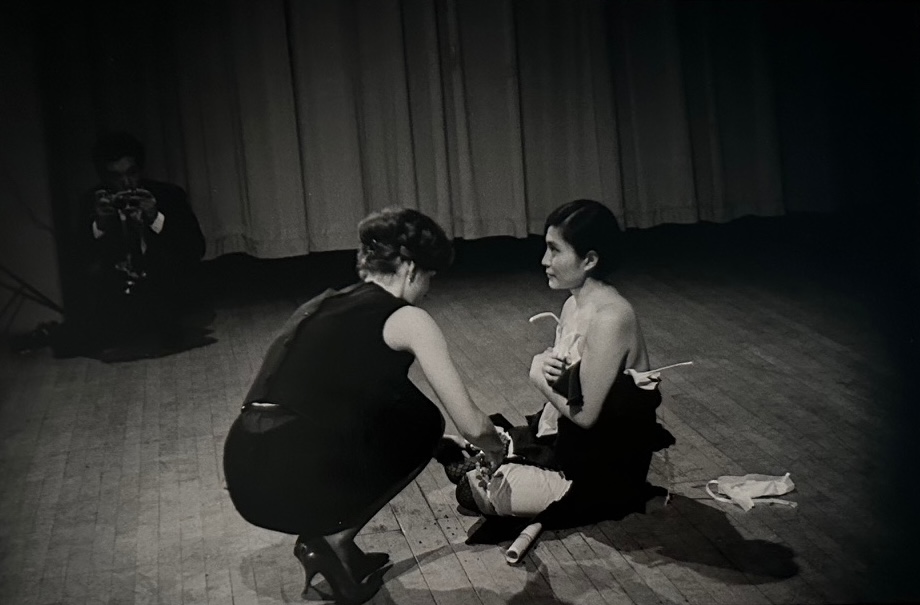
Cut Piece 1964 filmed 21 March 1965
Photos by Marc Lauterfeld